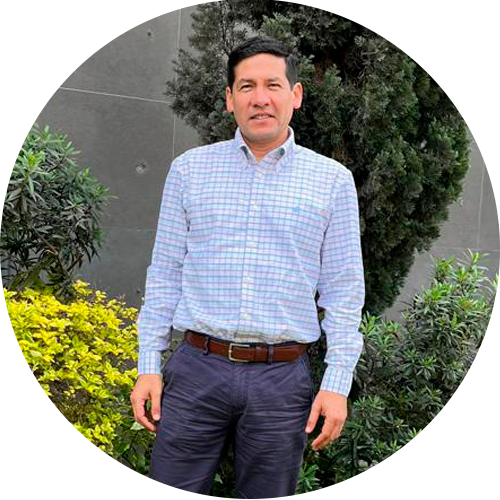We spoke with Jorge Heredia, Assistant Sales Manager for Flavors at Cramer Peru, about the developing Peruvian market, the trends shaping it and Cramer’s role in its growth.
With a strategic, consumer-focused approach, Jorge explains how local cuisine inspires innovation, how technology and talent work together to respond agilely, and how the company is preparing to continue growing in an increasingly competitive environment.
How would you describe the development of the Peruvian flavor market in recent years? What role has Cramer played?
The Peruvian market has expanded both qualitatively and quantitatively in recent years. On the qualitative side, there has been a rise in higher-value-added flavors as well as:
- More complex profiles, inspired by nature and the culinary arts
- Adoption of international regulations and monitoring of market trends
- Shorter delivery times driven by market momentum and, of course, increasingly competitive pricing
- The wave of startups related to the food industry is noteworthy. They gained significant momentum post-pandemic, laying the foundation for brands that have since secured prominent market positions.
This all aligns with sustained market growth, both domestically and internationally.
At Cramer Peru, we have observed these changes and swiftly adjusted our strategic approach, positioning ourselves to effectively meet customer needs and drive innovation by developing concepts and categories previously nonexistent in our market.
What strategies have been key to connecting with local customers and understanding their specific needs?
- Market knowledge: This extends beyond the industry and includes an understanding of consumers and the distribution chain, which is mainly a traditional channel in the Peruvian market.
- Build a highly professional, dedicated sales team that connects with our customers. The team also fosters synergy with our (FIS) marketing team to identify and respond to opportunities with concepts that surprise the Peruvian consumer. They are also responsible for communicating with our customers and turning these opportunities into high-value business deals that benefit both parties.
- Market segmentation: Cramer supports the entire food and beverage industry, from large multinationals to small startups in Lima and throughout the country. To that end, it has established specific policies and protocols for each segment.
- Flavor laboratories with state-of-the-art equipment and a top-tier technical team that includes flavorists and application specialists with a deep understanding of flavor creation, food technology and the tastes and preferences of Peruvian consumers. These factors enable us to respond to market challenges with winning proposals and accelerate our response time to meet market demands.
- Furthermore, headquarters is continually upgrading infrastructure, equipment and staff in its laboratories, plants and other support areas to adequately serve the Peruvian operation.
- Marketing and innovation are cornerstones of our customer loyalty and customer experience strategy.
Peru is known for its rich culinary tradition. How does this food identity shape the emergence of new flavors or influence market preferences?
The culinary tradition influences our business in several ways. On one hand, Peruvian dishes, desserts, fruits and vegetables serve as sources of inspiration. Furthermore, this pride in our traditions has made us very selective. We refuse to compromise on indulgence for the sake of price, functionality or other added values. Additionally, certain categories are increasingly demanding tailor-made solutions with ingredients that are as natural as possible.
What is the biggest lesson you’ve learned from leading the sales team in a market as dynamic as Peru’s?
One key lesson is learning to interpret market signals. This depends on good communication with the sales team since they are the primary point of contact with the market. Our organization has effectively read these signals and adjusted its strategies accordingly.
From your perspective, what are the primary challenges involved in leading the commercial growth of a flavor house in Peru?
One of Cramer Peru’s main strengths is its ability to act as a local supplier in terms of project support and order fulfillment.
As we grow in line with projections, we face the challenge of maintaining the same level of service — that is, ensuring the market doesn’t perceive us as losing the qualities that led it to choose us.
What opportunities do you currently see for further innovation in flavor and experience within the Peruvian market?
The Peruvian market continues to expand and challenges us across nearly every category. In salty concepts, cuisine remains as our hallmark, now with more natural ingredients. As another example, the snack category keeps surprising us with its demand for increasingly disruptive concepts. The preference for natural flavors has increased dramatically, and Cramer has prepared to meet that demand.
Looking ahead, what is your vision for Cramer in Peru? How are you preparing for continued growth in an increasingly competitive environment?
Cramer will continue implementing several strategies in human resources, process optimization, infrastructure development and equipment upgrades. These include the planned opening of a new office in late 2026, with three times the current space and top-tier equipment, enabling us to continue serving as an extension of our clients’ development areas. These efforts, combined with optimized logistics from headquarters, enable us to supply customers in a very agile, timely manner.
You can also find us on






